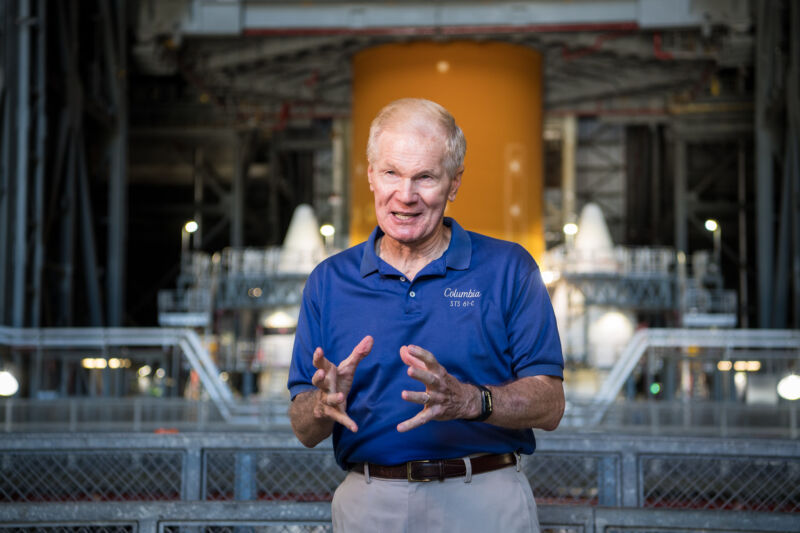
NASA
Not for the first time, I was wrong. And participating in an interview earlier this month with NASA Administrator Bill Nelson, I knew it.
“Before asking any questions, I just want to say something,” I said at the beginning of our discussion. “I wrote some critical things about you when you were appointed administrator. And I was wrong.”
Nelson chuckled in response.
“I have to say, as a politician, you get used to criticism,” he said. “If I recalled all the flak I’ve received over the years, I’d be a basket case. I get enough flak at home from coaching that I got from Grace Nelson, and I remember that flak best. But the ones in politics and professional life, I don’t I don’t even remember.”
President Biden appointed Nelson as NASA administrator on March 21, 2021. At the time, Nelson seemed too old for a rapidly changing space agency. He had also been a critic of the commercial space industry that the agency was increasingly turning to for low-cost services. And he had sharply criticized the previous administrator, Jim Bridenstine, saying that a politician shouldn’t lead the space agency. (Nelson was a politician for 45 years before leading NASA.) My story on his appointment reflected these concerns.
None of this mattered in the nomination process. Nelson’s former colleagues in the US Senate, where he served 18 years, quickly confirmed him to the position in a voice vote.
Since then, Nelson has led NASA as a statesman. Behind the scenes, he made sure he had two capable lieutenants to assist. Pam Melroy, only the second woman to command a space shuttle, became his deputy administrator. Nelson’s friend and another former shuttle commander, Bob Cabana, was tapped to become an associate administrator. Nelson delegated the technical details to them. And he did what he does best: chat.
Along the way, he’s managed to charm just about everyone, including some of us in the media who were skeptical. He wasn’t absolutely perfect. He often speaks for banalities and generalities. But he is getting the job done. Ask pretty much anyone Nelson came into contact with during his tenure as a director and you’ll get some variation of “he’s just a really nice guy that he delivered for the agency.”
Nelson deserves no credit for all of the space agency’s successes during the 18 months since he took over as administrator. Many of these projects started years or decades ago. But he took them over the edge and brought the agency into what is a golden age for many of his programs. He considers some of NASA’s recent findings:
- Launch and deployment of the James Webb Space Telescope, a $10 billion project that could have easily failed
- Launch and successful flight of long-delayed Artemis I mission, kickstarting return of NASA astronauts to deep space
- Preserving the International Space Station’s fragile partnership with Russia amid the turmoil of Russia’s war against Ukraine
- DART’s impact mission was a success, finally fulfilling NASA’s mandate to demonstrate the ability to deflect an asteroid
- Secure full funding for the Artemis program, including spacesuits and SpaceX’s Starship lunar lander
Given the above results, it can be reasonably argued that 2022 has been the best year for NASA since 1969, when Apollo 11 landed on the Moon. Furthermore, the future looks bright for the space agency. For his science direction, NASA officials can point to a number of ongoing science mission successes: the Ingenuity the helicopter is still flying to Mars after more than a year, for example, and a pipeline of upcoming exploratory missions that include returning Martian rocks to Earth while visiting the intriguing moons of Europa and Titan. And with humans, for the first time since Apollo, NASA has a credible path for human exploration of the Moon and perhaps, one day, Mars with the Artemis program.
Nelson had the good sense to double Artemis, created by its predecessor, Bridenstine. Too often new administrations, and new administrators, have swept away the jobs of those who came before, especially when they’re from a different political party. But Nelson has been singing Artemis’ praises since day one. And he’s also been true to his sustainability goal.